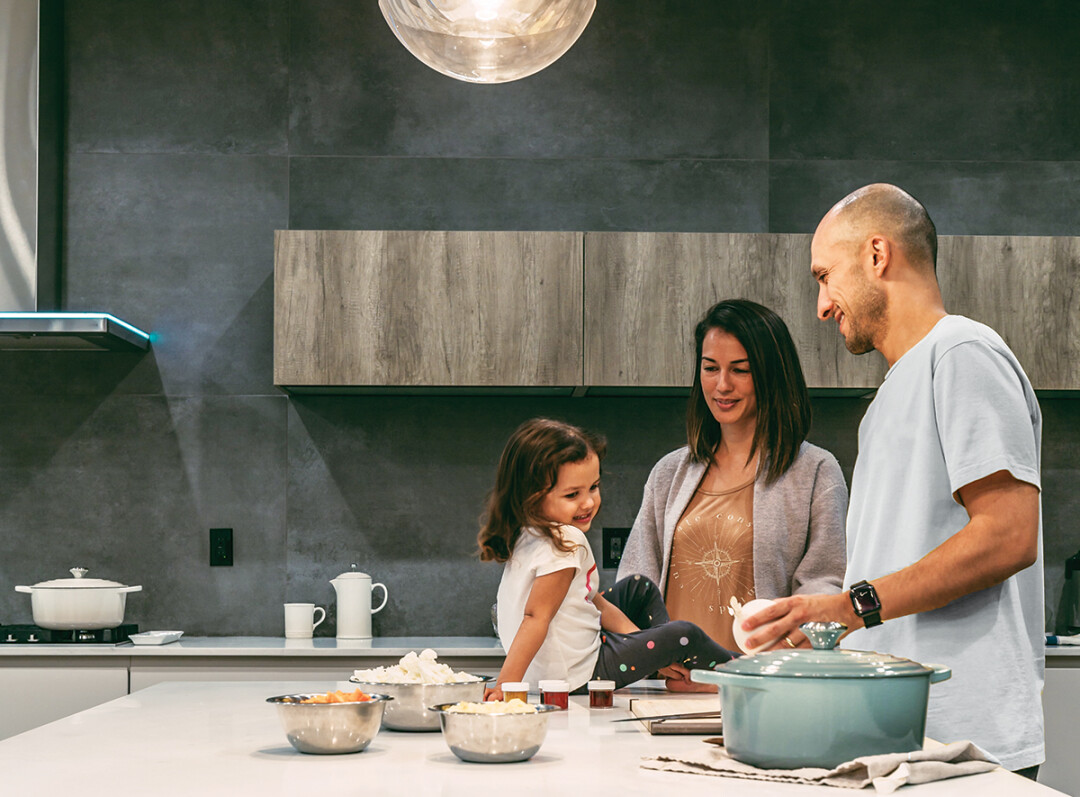Family Meals Don’t Just Mean Better Nutrition

It may not be surprising that when families eat meals together at home, kids eat better. But there are many more benefits of family meals! Research has found that when families eat together more often, kids also tend to:
- have a healthy weight
- be more confident
- do better in school
- connect and talk more with their parents
- be less likely to have behavior problems be less likely to use drugs, cigarettes, or alcohol when they get older
These benefits are seen when a family eats three or more meals together per week. A family meal means at least one parent sits down to eat with kids at home.
Want to enjoy more meals as a family, but short on time? Here are some tips to make family meals happen:
• Set a goal. If you already eat together one time each week, start by adding in one more weekly family meal.
• Keep it simple when you don’t have time to cook. The meal doesn’t have to be fancy or homemade to be healthy and enjoyable.
• Build a small collection of meal ideas that take 30 minutes or less. Here are four meals you can prepare quickly:
1. Frozen ravioli with tomato sauce and a salad. Keep your pantry stocked with items like whole grain pasta and store-bought tomato sauce. Load your freezer with quick items like frozen ravioli and turkey meatballs. A meal will be no more than 20 minutes away.
2. Rotisserie chicken (or chicken prepared in a slow cooker), frozen mashed potatoes, and peas. Frozen veggies may actually have more nutrients than fresh because they are flash frozen within hours of harvesting. They can be ready in the microwave or on the stovetop in minutes.
3. Veggie burgers, whole grain bread, baby carrots, and apples. Keep your fridge stocked with easy fruit and vegetable sides to turn any meal into a healthier option compared to fast food.
4. Grilled chicken Caesar salad with French bread. Slice up store-bought grilled chicken and toss with a salad mix. Frozen whole-wheat dinner rolls or French bread can be freshly baked within 10 minutes.
• Ask for help. Teach kids that taking time and effort to eat together is important. Children can help share ideas for meals. Little kids can practice counting forks and napkins to set the table. Older kids can pour drinks and prepare a salad. Teenagers can practice independence by taking a small grocery list and money to the store: Let them pick out an extra vegetable or whole grain bread for family meals.
• Make it fun. With young children, encourage them to taste the foods offered, but don’t force them to eat. Avoid snacks before and after meals and then let children choose how much to eat. Let them be a part of the conversation by asking fun questions. Let them look at a small book or magazine, if needed, to keep them at the table with the family. With older kids, leave serious conversations for another time. Focus on making family meals a time everyone looks forward to.
Susan Krahn, MS, RDN, CD, CLC, is a public health nutritionist for the Eau Claire City-County Health Department.




















